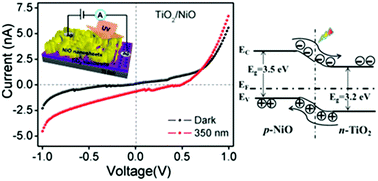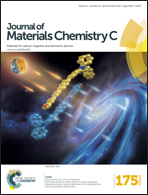Large scale, highly efficient and self-powered UV photodetectors enabled by all-solid-state n-TiO2 nanowell/p-NiO mesoporous nanosheet heterojunctions†
Abstract
Self-powered UV photodetectors (PDs) functioning without any power supply are urgently needed in modern optoelectronic devices from the viewpoint of being energy saving, portable and miniature. In this work, we report a novel heterojunction structure on a large scale based on n-type TiO2 nanowells and p-type NiO mesoporous nanosheets in an economic route. The novel synthesis strategy using thin-layers of TiO2 nanowells instead of conventional anodic nanotube geometry enables faster charge carrier transport through a shorter diffusion pathway along the lateral direction; and the flower-like morphology of NiO nanosheets guarantees the interfacial active reaction sites to UV light exposure, which takes great advantages of the p–n junction area to enhance the generation of electron–hole pairs. The hybrid PD performed in a self-powered mode is carefully explored which shows an enhanced photoresponse including good responsivity, excellent wavelength selectivity and high stability. This work presented here opens up new avenues for developing high-performance energy-efficient devices economically with a large area.


 Please wait while we load your content...
Please wait while we load your content...